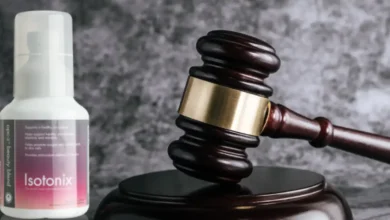Trulife Distribution Lawsuit: Everything You Need to Know About the Case and Its Impact

The Trulife Distribution Lawsuit has captured the attention of many in the legal and business world. This high-profile case has drawn in the media, legal experts, and consumers alike, as it threatens to reshape the landscape of distribution practices and set significant legal precedents. If you’re wondering about the key details, implications, and potential outcomes of this lawsuit, you’re in the right place. In this article, we will explore the background of the case, the legal issues at play, the potential outcomes, and its broader impact on the industry trulife distribution lawsuit.
Introduction to the Trulife Distribution Lawsuit
The Trulife Distribution Lawsuit centers around serious legal claims against Trulife, a well-known company in the distribution industry. The lawsuit was initiated by several parties who allege that Trulife engaged in unethical or illegal practices that impacted their business relationships and harmed consumers. This case is significant for a number of reasons, including its potential to set new legal precedents for distribution companies and the wider business world trulife distribution lawsuit.
Understanding the specifics of the Trulife Distribution Lawsuit is essential for anyone in the distribution, business, or legal sectors. It has the potential to affect how distribution contracts are structured and how businesses navigate disputes in the future. The lawsuit has sparked a flurry of legal analyses, with experts offering insights into the case’s possible outcomes and long-term consequences. Whether or not Trulife is found guilty of the charges, the case will likely have lasting ramifications for how companies approach distribution agreements and contractual obligations trulife distribution lawsuit.
Background of Trulife and the Legal Dispute
To fully comprehend the Trulife Distribution Lawsuit, it’s important to first understand who Trulife is and the context of the dispute. Trulife is a major player in the distribution sector, known for its supply of various products to wholesalers and retailers. The company has built a strong reputation over the years, but this lawsuit has cast a shadow over its operations and practices trulife distribution lawsuit.
The legal dispute began when a series of allegations were made against Trulife, accusing the company of failing to uphold contractual obligations and engaging in business practices that were not transparent. The plaintiffs—ranging from suppliers to distributors—claim that Trulife misrepresented information, failed to honor agreements, or took actions that led to financial losses. Specific details of the case include accusations of fraud, breach of contract, and negligence. These charges are particularly concerning for a company of Trulife’s stature, as they touch on critical business practices like trust and transparency, which are essential in maintaining healthy business relationships trulife distribution lawsuit.
A timeline of events leading to the lawsuit reveals a pattern of escalating tensions, with multiple attempts at resolution failing. The plaintiffs assert that Trulife’s actions have caused substantial financial and reputational harm. As the case moves through the legal system, both sides are preparing for a potentially lengthy and complicated battle, with no clear resolution in sight as of now trulife distribution lawsuit.
Key Legal Issues in the Trulife Distribution Lawsuit
The Trulife Distribution Lawsuit involves a number of significant legal issues that are central to the case’s development. These issues not only affect the parties directly involved but could also have a wider impact on distribution agreements in the future. One of the key legal concerns is the allegation of breach of contract. The plaintiffs argue that Trulife did not honor specific terms of their agreements, leading to disputes that have now escalated into legal action. Breach of contract is a serious accusation that could result in significant financial penalties, as well as damage to Trulife’s reputation in the business community.
Another critical issue in the lawsuit is fraud. The plaintiffs allege that Trulife misrepresented key facts or intentionally withheld important information during the negotiation or execution of contracts. Fraudulent practices, if proven, can have severe legal consequences, ranging from monetary compensation for damages to potential criminal charges, depending on the nature and scope of the deceit.
In addition to breach of contract and fraud, the negligence claims in the lawsuit are noteworthy. The plaintiffs argue that Trulife failed in its duty of care to ensure that their business practices were compliant with legal standards and ethical expectations. The role of evidence in this case is crucial, as both sides will need to present solid documentation and testimony to support their claims. The outcome will largely depend on the strength of the evidence and how the court interprets these complex legal issues.
Potential Outcomes and Implications of the Trulife Lawsuit
As the Trulife Distribution Lawsuit progresses, the potential outcomes are varied and could have a lasting impact on Trulife and the broader distribution industry. One possible outcome is a settlement. This would allow both parties to reach an agreement outside of court, which could lead to financial compensation for the plaintiffs and a resolution of the dispute. While settlements are often viewed as a quicker and less expensive option, they may not provide the same clarity or legal precedents as a full trial.
If the case goes to trial, the outcome could hinge on several factors, including the strength of the legal arguments presented by both sides and the interpretation of evidence by the court. A judgment in favor of the plaintiffs could result in substantial financial penalties for Trulife, as well as damage to the company’s reputation. On the other hand, if Trulife is successful in defending itself, the case could establish a precedent that limits future legal claims against distribution companies in similar situations.
The implications of the lawsuit extend beyond Trulife itself. A judgment against the company could lead to increased scrutiny of other distribution businesses, prompting them to reevaluate their practices and tighten their contractual agreements. Conversely, a favorable outcome for Trulife might reinforce current business practices, potentially making it more difficult for plaintiffs to pursue similar claims in the future. Ultimately, the Trulife Distribution Lawsuit could reshape industry standards, influencing how distribution companies conduct business and handle disputes moving forward.
Conclusion: What’s Next for Trulife and the Industry?
As the Trulife Distribution Lawsuit continues to unfold, its outcome will likely have significant implications for the company and the industry at large. Whether the case is settled or proceeds to trial, the lawsuit has already started to reshape how distribution companies approach their contractual obligations and business relationships. The legal battle serves as a reminder of the importance of transparency, ethical conduct, and adherence to legal standards in business practices.
For Trulife, the path forward is uncertain. The company must now navigate the legal process, address the allegations made against it, and consider how the outcome will affect its future operations. On the broader scale, the case serves as a valuable lesson for businesses in the distribution sector, highlighting the importance of clear, fair, and legally sound agreements to avoid potential legal disputes.
As we await the next steps in the Trulife Distribution Lawsuit, it is clear that the case will have lasting effects on business practices in the distribution industry. Whether through changes in legal precedents or shifts in industry standards, the ramifications of this lawsuit are far-reaching and will influence future legal battles in the business world.
